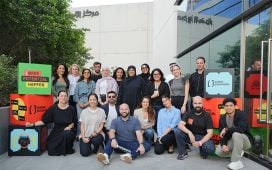by Elias W. Bassil, Head of Strategy Geometry MENA

In the past 8 months, and while many (me included) were talking about this ‘new normal’, more than 68% of people in the MENA region claim wanting to get back to the way their lives were before the crisis[1].
One key reason for that, is people have lost a sense of control that they long for.
Since the beginning of the pandemic, our brains have been rewired to assess social distancing, contact and hygiene measures – and we’ve had to suppress a lifetime’s experience of learnt social norms such as hugging, kissing, shaking hands – as a demonstration of affection and courtesy.
As things are loosening up, and people are starting to go out, I’m starting to see what this new normal looks like. At first, I thought it existed in the sense of wearing masks and gloves, and limiting how much we go out and where we go to. But what it is looking like now, is much different.
People are out and about.
People are hosting and meeting friends and family.
Some do the elbow bumps, while others go in for the most awkward hugs.
People missed being anywhere other than their home.
People (most) are wearing masks – and those who aren’t, surely get an angry staredown.
But more importantly, the real new normal means: don’t touch my s***.
We’ve all read the detailed guidelines on hygiene.
We’ve all shared the low-touch economy report.
Even we, as geometry, went deep into creating strategies of differentiation through a commitment to sanitary solutions.
But today, I’ve come to realize it is not just about that.
It is actually personal and related to me, as a person, and my new standards.
Who tried on this shirt before me?
Who squeezed this avocado and prepped my guacamole?
Who made my coffee?
Who stood close to me in the lift?
And who is the person helping me with plumbing problems at home?
This list is endless, but the common thread is an individual sense of arrogance.
The “I am keeping my end of the hygiene bargain, not sure you are”.
So, what can brands do about that?
As an agency that sees brands beyond their product offering, we need to help them find that intersection between universal experiences, commerce and individualism.
Spaces where we turn people into creators of their own show.
Where they purchase at their pace and follow their own rules.
Where they interact with brands based on boundaries that they themselves set.
To start off with – we need to acknowledge that for many brands, the last mile today exists at people’s doorstep. So, when it comes to brands that were known to amplify the shopping experience, how can we recreate that through a delivery service, through unboxing, and even through the full online purchase journeys?
We also know that the pleasure of modern trade browsing still exists, yet the shopping speed has gone up drastically – therefore how can brands cater for that, realizing that bite-sized content isn’t limited to social platforms but also applicable in the offline world.
Come to think of it, some of the most interesting experience reengagements I’ve seen have been at concerts. For instance, Sam Fender’s concert in the UK developed 500 raised metal platforms that can hold groups of up to 5 people, for them to enjoy their time in the safety of their podium.
And you know what that means for commerce? Around 73%[2] of people are willing to pay a premium to ensure a more enjoyable, safer experience – one that centres around them as unique individuals.
Finally, and what is sometimes missing in this conversation, is a level of realism. This might sound a bit left-field but bear with me.
The reason texting and driving is still very much existent today isn’t because awareness is at a low or governments haven’t done enough to prevent this act. Everyone knows about the dangers, and almost everyone has experienced a near miss due to texting and driving.
The real reason people still do it is because they have done so countless times, consequence-free.
That’s the issue we might face when people start to go out more and engage more.
They will go out, they will make a mistake, touch a random surface, or bump shoulders with a stranger in the lift – and over time, with no immediate consequences on you as an individual, the careless habits will grow. And following that, precautionary measures will be taken for granted or even forgotten.
And so, we have a duty as brand owners, beyond encouraging a sort of alternative means of engagement – a duty that will always find means to limit unwarranted acts.
Soon enough, brands will be welcomed back into our lives and given more control over our experiences. These brands need to take on that role, with full accountability, and make sure they find the healthy balance between what we want as consumers, and what we need as people in a bigger society.
[1] The Day After, Research Conducted by Geometry on 600 people in the MENA region (April, 2020)
[2] The Day After, Research Conducted by Geometry on 600 people in the MENA region (April, 2020)









